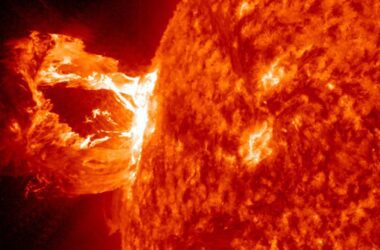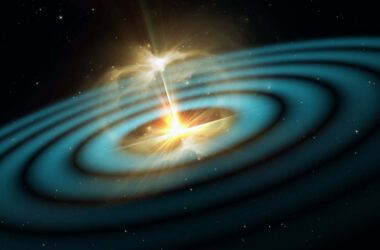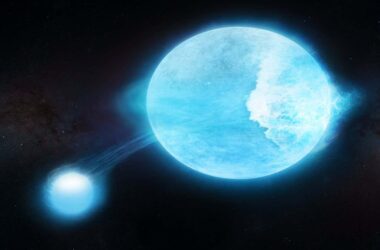Jupiter (left) and Saturn (right) seen in September 2022 in Alberta, Canada
Alan Dyer/VWPics/Getty Images
Here’s what you need to know to wake up early on June 17 and witness five planets aligning in the sky.
Where can we see the planets and when?
There will be a conjunction of Mercury, Uranus, Jupiter, Neptune, and Saturn on June 17, 2023. Jupiter and Saturn can be seen with the naked eye, whereas Mercury may be visible with little effort but requires binoculars or a small telescope to see clearly.
Where do I find the symmetry?
Since it is currently winter in the southern hemisphere, there will be more time to look for all five planets due to the extended hours of darkness. After Saturn and Neptune, Jupiter and Uranus will begin to rise, followed by Mercury.
On June 17th, before sunrise, you can see all five planets. Jupiter and Saturn will be visible two hours before sunrise, with Saturn highest in the northern sky. You’ll have over two hours to see Mercury before the sun comes up, despite the fact that it rises last among the planets.
Neptune may be seen with binoculars by sweeping the sky from Saturn to Jupiter. About two-thirds of the way between Saturn and Jupiter, it will be situated directly between the two larger planets. Using binoculars or a small telescope, you should be able to see a faint blue hue.
Uranus will be more buried in the horizon and harder to spot. It will be located in a direction opposite to Neptune from Jupiter. You can find its location with the help of a PC programme like Stellarium or an iOS/Android app like SkyView Lite.
When using binoculars around sunrise, exercise extreme caution and never point them directly towards the sun.
In the northern hemisphere, what’s the deal?
Finding all the planets now requires rising around an hour before local sunrise time, as there are fewer hours of darkness. Saturn will be slightly higher and more to the south than Jupiter, but both will be visible in the southeasterly sky. Jupiter will be visible an hour before sunrise, high in the east. Mercury will rise around half an hour before sunrise, giving you less time to see it.
What are the criteria for distinguishing a planet from a star?
In general, stars twinkle while planets do not. Because stars are so far away, the light they emit behaves like a laser beam, a point source. This means that starlight is more prone to directional aberrations when it enters our atmosphere than planetary light. The apparent sparkle is brought on by these aberrations.
Why do planets sometimes line up?
The planets wouldn’t form a straight line if seen from above during this alignment in our solar system. Instead, they are all located on the sun’s opposite side from Earth, so their light is reflected back towards us. When viewed from Earth, this is what makes the planets appear to be lined up in a row.
How common are they, exactly?
There is no consistent pattern to these alignments because they are dependent on the motions of all the participating planets. In June of 2018, we witnessed the first alignment of Mercury, Venus, Mars, Jupiter, and Saturn since 2016.
FAQs
- Where and when can I see the five-planet alignment?
- On June 17, 2023, Mercury, Uranus, Jupiter, Neptune, and Saturn will align. This event can be observed in both the northern and southern hemispheres.
- What planets are visible with the naked eye?
- Jupiter and Saturn are visible to the naked eye. Mercury can be seen with little effort but requires binoculars or a small telescope for clearer viewing.
- How can I find the planets’ positions in the sky?
- In the southern hemisphere, the planets will follow a sequence of rising after Saturn and Neptune, with Jupiter and Uranus rising later. In the northern hemisphere, Saturn and Jupiter will be visible in the southeast before sunrise.
- What precautions should I take while observing with binoculars?
- Never point binoculars directly towards the sun. Use caution and proper filters when observing around sunrise.
- How do I distinguish planets from stars?
- Unlike stars, planets do not twinkle due to atmospheric aberrations. The apparent twinkling of stars is caused by their distant light passing through the atmosphere.
- Why do planets sometimes align in the sky?
- Planets appear to align when viewed from Earth because they are all on the opposite side of the sun, with their light reflecting back towards us.
- How often do these planet alignments occur?
- Planet alignments do not follow a consistent pattern, as they depend on the complex motions of the participating planets. The last alignment of Mercury, Venus, Mars, Jupiter, and Saturn was witnessed in June 2018.







